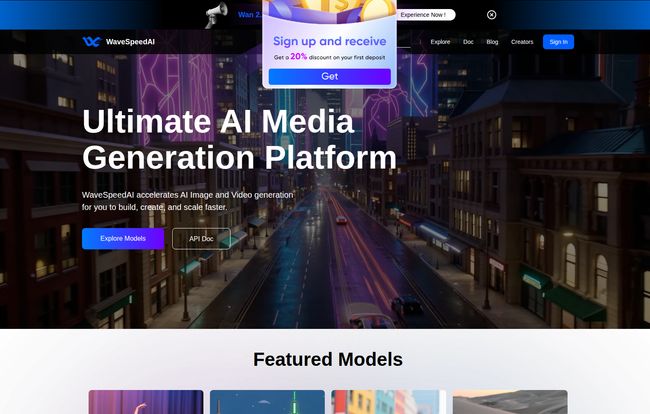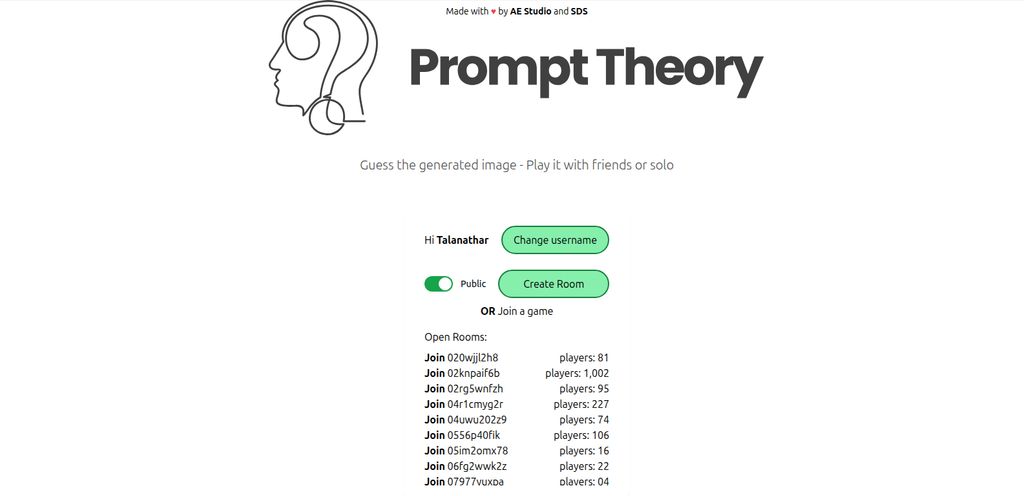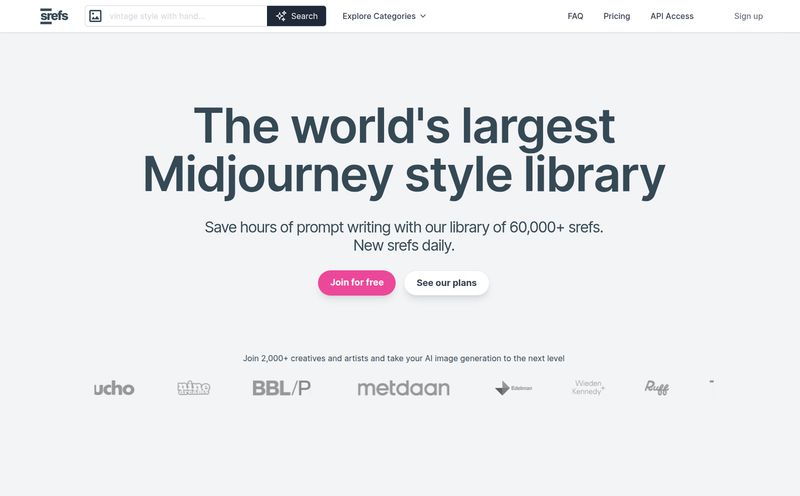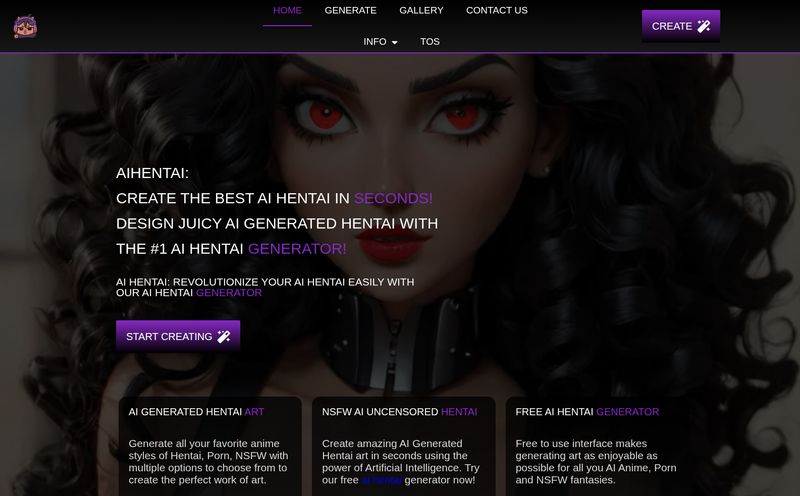The AI creative space is getting... crowded. Every single week, there's a new 'game-changing' model, a new platform that promises to revolutionize your workflow, a new tool that everyone on X (formerly Twitter) is freaking out about. It’s a whirlwind. It's exciting, for sure, but it’s also kind of exhausting. Keeping up feels like a full-time job, and finding the right tool for a specific task can feel like searching for a needle in a digital haystack.
For a while now, I've been juggling a half-dozen different platforms. One for photorealism, another for anime styles, a separate one for those weirdly compelling image-to-video animations. It’s a mess of subscriptions and credits. So when I stumbled upon WaveSpeedAI, my interest was piqued. Its whole pitch isn't about being one new model, but about being a hub for many models. A central station for AI generation. But is it just another drop in the ocean, or is it the tidal wave it claims to be?
So, What Exactly is WaveSpeedAI?
This is the important part. WaveSpeedAI isn't trying to be the next Midjourney. It's not building one single, proprietary AI model to rule them all. Instead, think of it as a professional-grade workshop. It's a platform that gives you access to a whole bunch of different, powerful AI engines under one roof. You get to pick and choose the best tool for the job.
I like to think of it like this: many AI art generators are like fantastic, high-end restaurants with a brilliant but set menu. You get what the chef is making. WaveSpeedAI is more like a massive, bustling food market with specialist stalls. You’ve got a stall for amazing photorealistic portraits (that’s your FLUX model), another for incredible video creation (hello, Wan 2.1), and another for niche artistic styles. You get to walk around, pick your ingredients, and cook up exactly what you want.
It’s a playground for creators and, maybe more importantly, for developers who need API access to these different models without integrating a dozen different services. That, to me, is where it gets really interesting.
The Good Stuff: What I Liked About WaveSpeedAI
I spent a good bit of time generating images, fiddling with settings, and generally kicking the tires. A few things really stood out.

Visit WaveSpeedAI
A Buffet of AI Models
The variety is the main draw. The homepage lists models like FLUX Dev, Wan 2.1, KLING, HaiLuo 02, Ideogram, and more. This isn't just about quantity, it's about having access to specialized tools. FLUX is fantastic for that crisp, high-detail imagery that's all the rage right now. Wan 2.1 is making waves (pun intended, sorry) for its image-to-video capabilities. Having them all in one spot, accessible through a consistent interface or API, is a huge time-saver. You're not locked into a single aesthetic, which is freeing for any creative professional.
Your Art, Your Style with LoRA Support
Now this is a big deal for serious artists and brands. LoRA, or Low-Rank Adaptation, is a technique for fine-tuning AI models. In plain English? It lets you train the AI on your own specific style, characters, or objects. WaveSpeedAI has robust LoRA support, and they even offer custom LoRA training. This means a company could train a LoRA on its product line for perfect marketing shots, or an artist could train one on their unique illustration style to generate new works that are unmistakably theirs. This moves past generic AI art into a realm of true personalization. It's a feature that separates the pro tools from the toys.
From Still to Motion with Image-to-Video Magic
We’ve all seen those slightly janky, flickering AI videos from a year ago. The tech is moving at an incredible pace. The image-to-video and video-to-video models here, like Wan 2.1, are genuinely impressive. You can feed it an image and watch it animate with surprising coherence. It's perfect for creating eye-catching social media content, animated logos, or just bringing a static piece of art to life. This isn't just a gimmick; it’s a powerful new form of content creation that's becoming more and more accessible.
Let's Talk Money: The WaveSpeedAI Pricing Model
This is where WaveSpeedAI takes a sharp turn from the usual monthly subscription. It operates on a pay-as-you-go model. You pay per image or per second of video, and the price varies wildly depending on the model you use and the quality you select. This can be both a blessing and a curse.
On one hand, I love it. If I only need to generate 20 high-quality images for a project this month, I'm not stuck paying a $30 subscription fee. I just pay for what I use. It's efficient and fair. For developers using the API, it's the standard they expect. But for a casual user, it can be a little intimidating. You have to keep an eye on your usage.
Here’s a quick peek at how different the costs can be:
| Model / Task | Price | Good For |
|---|---|---|
| FLUX Dev Ultra Fast | $0.002 / image | Quick drafts, rapid experimentation |
| FLUX Dev Lora | $0.015 / image | High-quality images using a custom style |
| Wan 2.1 I2V | $0.125 / video | Standard image-to-video animations |
| Wan 2.1 v2v-720p-lora | $0.30 / video | Higher resolution, stylized video generation |
As you can see, a quick concept image is incredibly cheap, while a high-res, stylized video costs significantly more. This granularity is powerful, but it requires you to be intentional about what you're creating.
The Not-So-Perfect Bits
No tool is perfect, right? While I'm pretty bullish on WaveSpeedAI, there are a couple of things to be aware of. The sheer number of models and settings can create a bit of a learning curve. If you're used to just typing a prompt and hitting 'go', you might need to spend some time in the documentation to really get the most out of the platform.
Also, it's clear the platform is growing and evolving. I even landed on a 404 page at one point (a pretty stylish one, I'll admit). This isn't necessarily a bad thing—it shows they're actively building—but it means some features might feel newer or less polished than others. You're getting on a rocket ship that's still being assembled, which is exciting but occasionally bumpy.
Who Is WaveSpeedAI Actually For?
After playing around, I think the audience is pretty clear. This isn't really for your aunt who wants to make a picture of her cat as an astronaut (though she could). It’s built for a more demanding user.
- Developers: The API-first approach is a dead giveaway. If you're building an application that needs AI image or video generation, this is a one-stop-shop for multiple powerful models.
- Digital Artists & Creators: Anyone who needs stylistic flexibility and the power of custom LoRAs will feel right at home. It's for the artist who wants control, not just a magic button.
- Marketing & Social Media Teams: The ability to quickly generate on-brand images with a custom LoRA or create quick, engaging video clips for social feeds is a massive workflow improvement.
If you fit into one of those buckets, the value proposition here is really strong.
Frequently Asked Questions about WaveSpeedAI
So what is WaveSpeedAI in a nutshell?
It's an AI generation platform that gives you access to a variety of different AI models for creating images and videos. Instead of having one 'house style,' it offers a toolbox of different engines, like FLUX and Wan 2.1, for different tasks.
How does the pricing work again?
It's a pay-as-you-go system. You pay for each image or video you generate. The cost depends on which AI model you use and its settings (e.g., speed vs. quality). There's no flat monthly subscription fee.
Can I really train the AI on my own art style?
Yes! That's what the LoRA support is for. You can fine-tune models on your own images to create a unique, personalized generator that understands your specific aesthetic, characters, or products. This is one of its most powerful features.
What kinds of videos can I make?
The platform specializes in image-to-video (I2V) and video-to-video (V2V) generation. You can take a static image and animate it, or apply a new style to an existing video clip. It's great for short-form content, animated art, and special effects.
Is WaveSpeedAI good for complete beginners?
I would say it's more for intermediate to advanced users, or beginners with a willingness to learn. The sheer choice can be overwhelming if you're not sure what you're looking for. However, the potential is huge if you put in a little time to understand the different models.
Final Thoughts: Is It Worth Riding the Wave?
So, back to my original question. Is WaveSpeedAI a game-changer? For a certain type of user, I think it absolutely is. If you're a developer tired of juggling APIs or a creator who feels constrained by the stylistic boxes of other platforms, this tool feels like a breath of fresh air. It's a platform built on the principles of flexibility, power, and specialization.
It's not the simplest tool on the market, and the pricing model requires a bit of mindfulness. But it respects the user's intelligence and gives them the keys to a very powerful garage full of high-performance engines. For me, that’s a trade-off I'm more than willing to make. In an ocean full of AI tools, WaveSpeedAI has built a very compelling vessel for those ready to navigate deeper waters.



